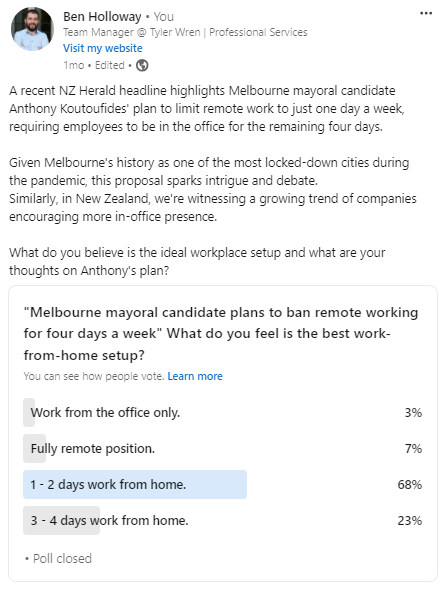Remember when working from home (WFH) felt like a distant dream? Then Covid-19 hit, and suddenly, it became a reality for many. Fast-forward a few years, and here we are. Some people crave full WFH, while others are eager to return to the office. Most of us just want a practical balance. Let’s explore the twists and turns and the evolution of work expectations in this new era.
From Office Life to Kitchen Table
Once upon a time, we dressed up and battled traffic to get to the office. Then, boom! Covid-19 declared, “Nah, stay home.” We transitioned to remote work overnight, and surprisingly, the sky didn’t fall. Productivity remained high, and many realized they enjoyed some perks—like wearing pyjama bottoms during video meetings.
As life began to normalise, companies wanted workers back in the office. In New Zealand, the government urged civil servants to return to their desks. They claimed it would boost collaboration and save city-centre cafés from ruin. After all, nobody wants to be responsible for Greg’s demise from the sandwich shop! It does beg the question: What happens to Liz, who owns the sandwich shop in Lower Hutt?
Elon Musk took an even firmer stance. He declared remote work “no longer acceptable” at Tesla. Apparently, being physically present shows commitment. Who needs flexibility when fluorescent lighting and a squeaky office chair await, right?
Australia Wants You to Have a Life Too
While some countries focus on where we work, Australia has tackled the “always-on” culture that emerged during Covid-19. It felt like we were always available—taking work calls during dinner and answering emails in bed. Australians decided enough was enough. They implemented rules stating you don’t have to respond to work messages outside of office hours.
That’s right—Australia encourages you to relax after 5 p.m.! This approach empowers employees to set clear boundaries. It promotes well-being and reminds us that there’s more to life than spreadsheets and Zoom meetings.
The Hybrid Dream
While some leaders push for a full return to the office, most people desire a bit of everything. We enjoy our homes and our colleagues (in moderation). In a recent LinkedIn poll, 68% of respondents preferred working from home one or two days a week. Only 3% wanted to be back in the office full-time, and 7% preferred being fully remote. Clearly, a middle ground is the desired option—because, let’s be honest, nobody wants to return to five days of traffic and overpriced office coffee.
Working from home has its perks, like not packing lunch and getting cuddles from the dog between calls. Meanwhile, the office offers real human interaction and fewer distractions. Plus, spontaneous collaboration happens more easily in person than over Teams.
The hybrid model is, for many, the perfect solution. A few days at home to help maintain work-life balance.

Conclusion
The Covid-19 pandemic catalysed a work revolution that few anticipated. From fully remote to a push for office comebacks, work expectations have shifted permanently. The preference for a hybrid model, as shown in my LinkedIn poll, indicates that employees value flexibility above all else. Meanwhile, initiatives like Australia’s right to disconnect pave the way for a more balanced working world.
At Tyler Wren, we understand the flexibility different businesses offer. Using a recruiter like us can make a significant difference. We ensure you only apply for roles that fit your needs and preferences. Whether you want to work remotely, in the office, or somewhere in between, we can help you find the perfect match.
Follow us: LinkedIn Facebook Instagram
Find out more about Tyler Wren’s Public Practice Recruitment Here.
Here at Tyler Wren, we know good people know good people. That’s why we offer a referral bonus if you refer someone to Tyler Wren, with whom we secure a new role. Click here to find out more and to refer a friend.
#TylerWrenAccounting #TylerWrenPublicPractice #TylerWren #TylerWrenCareers

